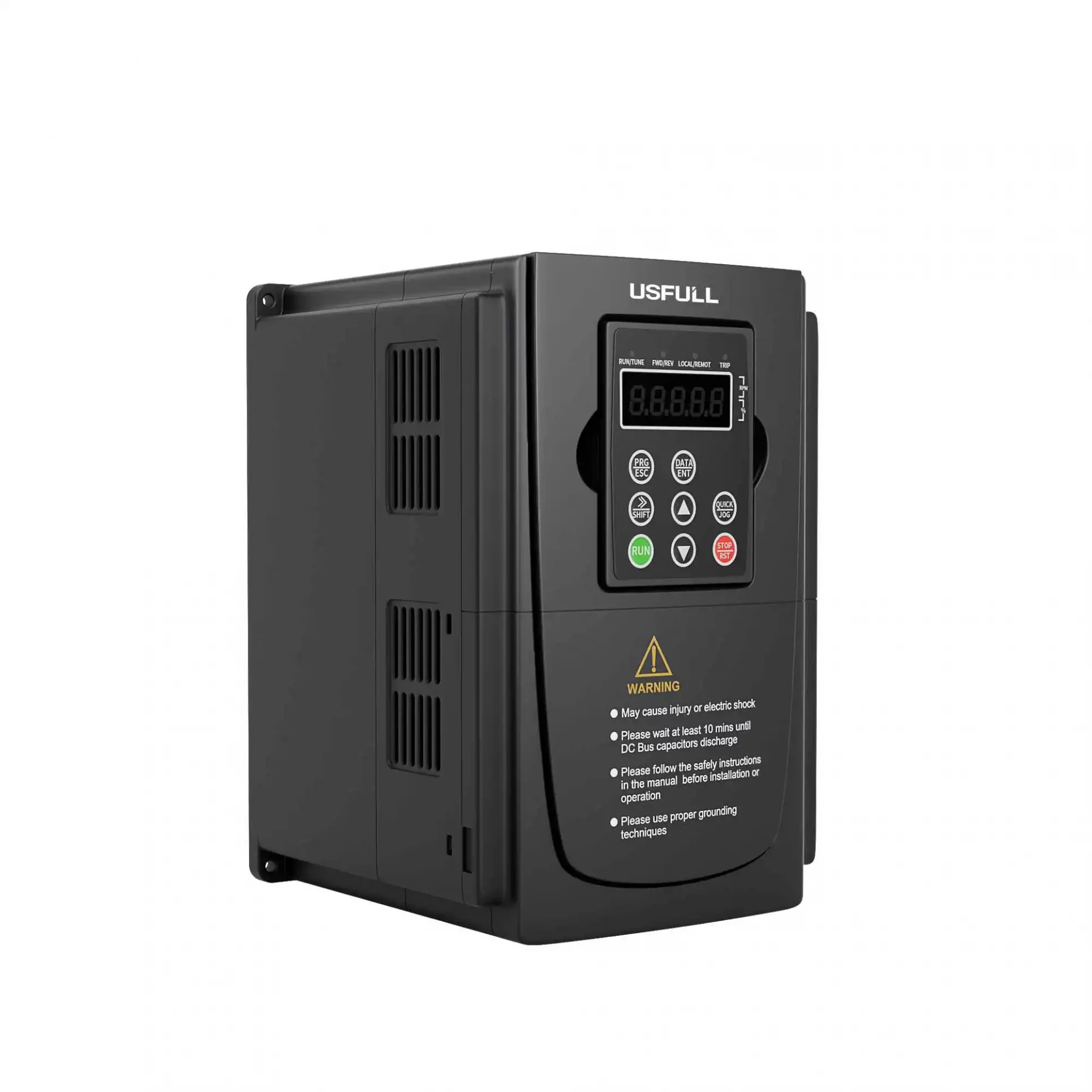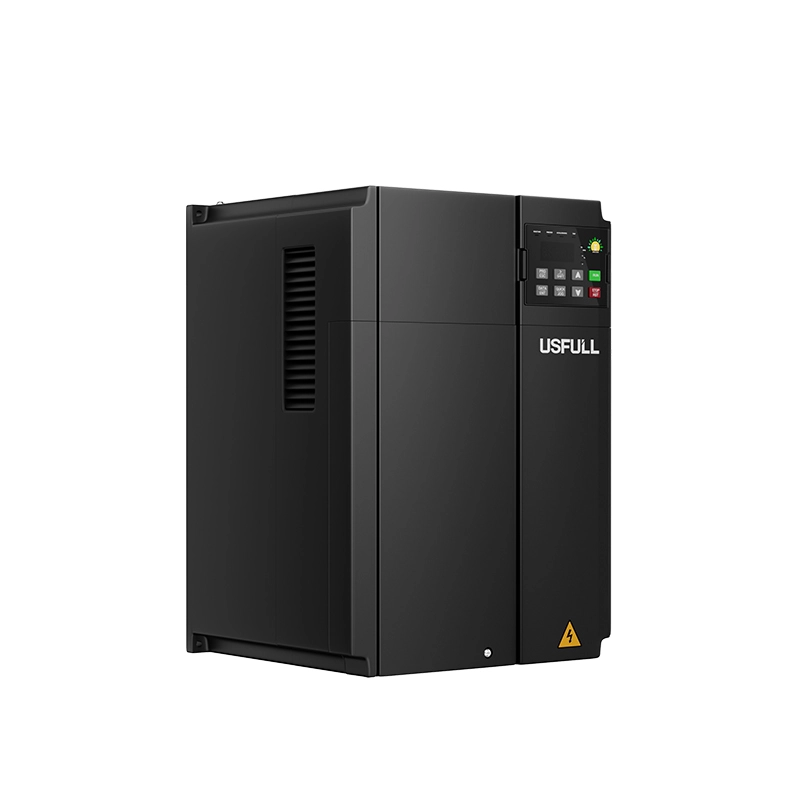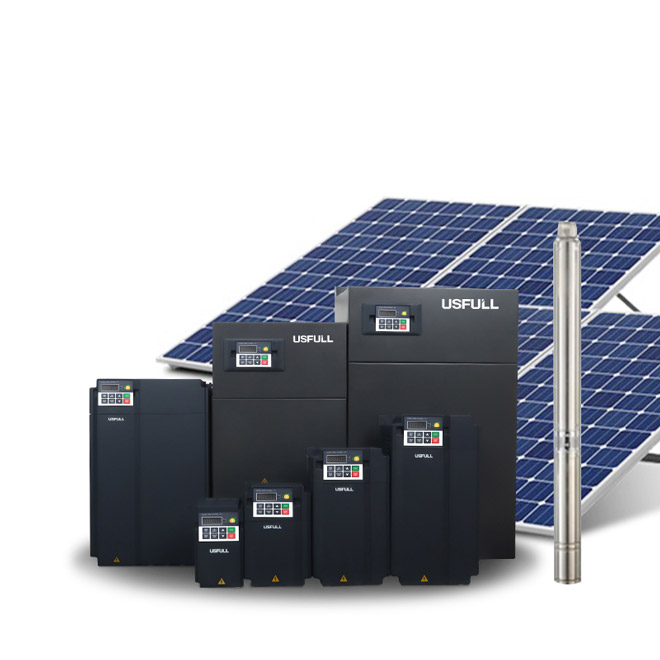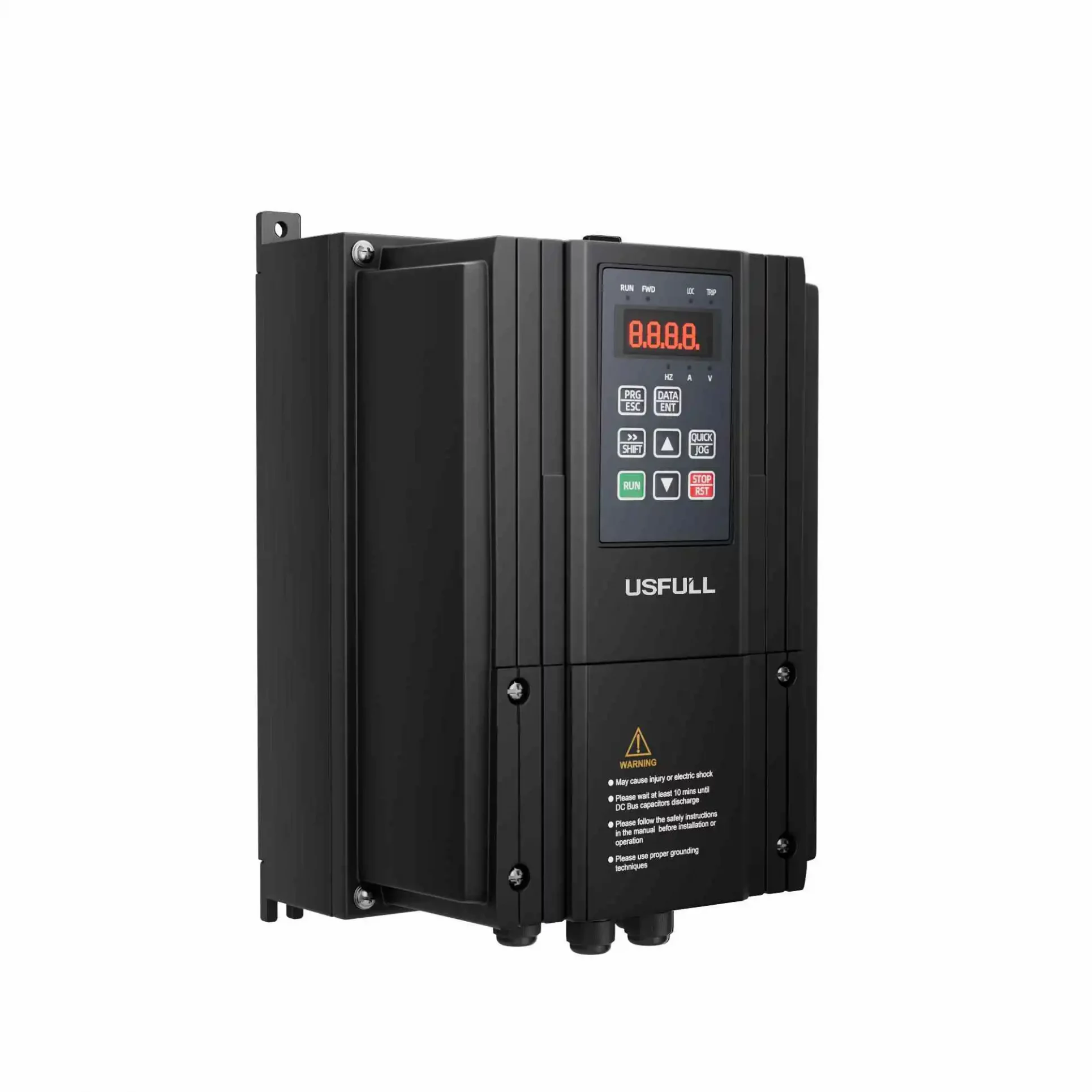A solar surge SPD is designed to protect your solar panels and associated equipment from power surges and transient voltage spikes. It diverts excess voltage and surges current to the ground, safeguarding your system from damage. Familiarize yourself with the importance of surge protection in solar installations.
1. Why Do Solar Power/PV Systems Need Surge Protection?
Solar arrays without surge protection devices (SPDs) are more susceptible to damage from surge current and transient spikes voltage. Here are some possible effects of not having an SPD.
1.1 Device Damage:
Voltage spikes can occur as a result of lightning strikes, mains voltage fluctuations, or internal system errors. These surges can damage sensitive components within your solar power system, including inverters, charge controllers, and other electronics. Without an SPD to shunt excess voltage to the ground, these components can prematurely fail or be completely damaged.
1.2 Security Risk:
Surge voltages can pose a safety risk to both the PV system and the connected facility. In extreme cases, abnormal heat caused by power surges can cause fires and electrical hazards. Protecting your system with SPDs can reduce these risks by shunting excess voltage from your solar array. Increased maintenance and replacement costs:
Without solar surge protection, equipment failures and interruptions that require repair or replacement can occur more frequently. This increases maintenance costs and system downtime, which can adversely affect solar energy production and financial returns.
1.3 Impact on Insurance and Warranties:
Some insurance policies and equipment warranties may require the installation of a solar surge protector. If your system is missing a DC SPD 1000V and an incident occurs, your ability to receive insurance coverage or warranty support may be impacted.
To protect your PV system from power surges and transient surges, it is recommended to install a PV surge protector. The protection device protects your equipment, ensures system reliability and gives you peace of mind that your PV system is well protected.
2. How Many Solar Surge Protectors are Required for A Photovoltaic/PV System?
The number of PV surge protectors required for a photovoltaic or PV system depends on the specific configuration and components of the system. Below are some general guidelines to keep in mind.
2.1 Main Service Entrance DC SPD:
A Type 1 DC SPD is recommended to be installed at the main entrance of the power supply of the building where the PV system is installed. This solar surge protector device provides complete protection for the entire electrical system including solar panels and related equipment. It protects against overvoltages from both mains and external sources such as lightning strikes. The main power input DC SPD 1000V should be rated to handle the maximum voltage and surge current expected in the system.
2.2 Subdistribution DC SPD:
In large photovoltaic systems there are often sub-distributors or collection boxes that combine the electrical output of multiple solar strings. It is recommended that Type 2 DC SPDs be installed in these sub-panels to provide localized surge protection to circuits connected to these panels. These DC SPDs protect against grid-induced overvoltages and limit the propagation of overvoltages within the system.
2.3 Device Level DC SPD:
Some sensitive devices within a photovoltaic system, such as inverters, may benefit from additional device-level surge protector. These Type 3 DC SPDs offer an extra layer of protection specifically tailored to your equipment’s needs. Refer to the device manufacturer’s recommendations to determine if a device-level SPD is required.
It is important to note that the specific requirements for DC SPDs in photovoltaic installations may vary depending on factors such as system size, installation site, local electrical codes, and industry standards. It is best to consult a qualified solar installer or electrician who can evaluate your system and provide specific advice on the number and type of DC SPDs required for optimal surge protection.
Also, make sure the DC SPD 1000V you choose has the voltage and surge current ratings and the necessary certifications to meet local safety standards. It is also recommended that DC SPDs be maintained and inspected regularly to ensure that they continue to be effective in protecting our solar system.
3. SPD Bypass Excess Voltage and Limit the Impact of Power Surges and Transient Spikes on Your PV System.
3.1 Voltage Adjustment:
DC SPD continuously monitors the voltage level of the electrical system. When the voltage exceeds a predetermined threshold, indicating that a surge or transient has occurred, the DC SPD activates to provide protection.
3.2 Deriving the Overvoltage:
DC SPDs provide a low impedance path to shunt excess voltage away from the protected device. Metal oxide varistors (MOVs) or gas discharge tubes (GDTs) are typically used as the primary protective element. These components have high resistance under normal operating conditions, but become conductive when voltage exceeds the rated threshold.
3.3 Absorbs and Dissipates Energy:
In the event of an overvoltage, the DC SPD 1000V immediately conducts the excess voltage to ground, bypassing sensitive equipment in the system. MOVs or GDTs in DC SPDs absorb surge energy by limiting the voltage to safe levels. This prevents excessive voltage from reaching the connected solar panels, inverters and other electronic components.
3.4 Voltage Limits:
DC SPDs are designed to limit surge voltage levels to safe thresholds. This voltage limit ensures that overvoltages do not exceed the load capacity of the device. By keeping the voltage within a safe range, the DC SPD protects the system from damage and helps prevent equipment failure.
3.5 Reaction Time:
The DC SPD’s response time (usually in nanoseconds) indicates how quickly the DC SPD 1000V can wake up when an overvoltage condition occurs. A fast response time is important to effectively dissipate the surge before it reaches the device. For optimal protection, look for DC SPDs with fast response times. Multiple levels of protection:
Different types of DC SPDs can be used in photovoltaic systems to provide multiple layers of protection. A Type 1 lightning arrestor is installed at the front door to protect against external surges. A lightning strike is installed. A type 2 DC SPD is connected to the subdistributor to protect against overvoltage from the network. A Type 3 DC SPD can be added at the device level for local protection.
DC SPDs help protect photovoltaic systems by dissipating excess voltage and limiting the effects of voltage spikes. Protect sensitive electronic components such as solar panels, inverters and other devices from damage, ensuring system reliability and longevity. It is important to choose a DC SPD 1000V that is suitable for system voltages and surge currents and that complies with relevant safety standards. In addition, we recommend regular inspection and maintenance of your DC SPD to ensure its continued effectiveness.
4. Here are Some Steps for Choosing the Right Solar SPD:
4.1 Understanding Purpose:
Solar DC SPDs are designed to protect solar panels and associated equipment from power / solar surges and transient spikes. Shunts excess voltage to ground to protect the system from damage. Familiarize yourself with the importance of solar surge protection in your photovoltaic system.
4.2 Compliance and Certification:
Make sure the DC SPD you choose meets relevant industry standards and certifications. Look for certifications such as UL 1449, IEC 61643-31, or EN 50539-11 that ensure your device meets specific safety and performance standards.
4.3 Voltage Value:
The maximum continuous operating voltage Uc PV of the photovoltaic system: usually DC 500V 600V 800V 1000V 1200V 1500V
Determine the maximum nominal voltage required for the photovoltaic system. It should match or exceed the maximum voltage that the panel will produce. Residential systems are typically rated at 1000 V or less, but commercial or public systems may require a higher voltage rating. Hence a DC SPD 1000V can be applied.
4.4 Surge Current Rating:
Maximum discharge current Imax: usually Imax: 10kA, 20kA, 40kA, 60kA, according to the use in different occasions.
Consider surge current ratings. This indicates the maximum amount of current the DC SPD can handle during a surge event. It should be enough to handle potential surges in the system. Power ratings are usually expressed in kiloamperes (kA).
4.5 SPD Type:
Various types of DC SPDs are available, such as Type 1, Type 2 and Type 3. Type 1 SPD is installed at the main inlet of the power supply to provide comprehensive protection. Type 2 DC SPDs are typically installed in sub-distribution boxes or junction boxes to provide protection against overvoltages from outside the building. Type 3 DC SPDs provide device-level local protection.
4.6 Voltage Protection Level (Vp):
VPL is a measure of how effectively a DC SPD limits transient voltages. This represents the voltage level at which the solar surge protection device limits transient voltages. Choose a DC SPD with a lower VPL as it provides better protection for your system.
4.7 Warranty and Lifetime:
Be aware of DC SPD’s manufacturer’s warranty. A long warranty usually reflects confidence in the quality of the product. Also, check the life expectancy of your DC SPD to make sure it matches the life of your PV system.
4.8 Advice:
If you are unsure of your PV system’s specific requirements, you should consult a professional PV installer or electrician to help you in selecting proper solar surge protection device. They can provide guidance based on the individual specifications of your system.
5. Installation Guidelines for SPD on Photovoltaic Applications
When installing surge protector devices (DC SPDs) in photovoltaic applications, it is important to follow correct guidelines to ensure effective solar surge protection. Here are some installation guidelines for solar surge protector for photovoltaic systems.
5.1 System Design Review:
Before installing a DC SPD, review the PV system design and identify critical components that need protection, such as: Inverters, charge controllers and monitoring systems. Determine the appropriate location to install the DC SPD based on your system layout.
5.2 Compliance with Standards:
Make sure the DC SPD you choose complies with relevant standards and certifications for solar surge protector in photovoltaic applications, such as: UL 1449, IEC 61643-31 or EN 50539-11. Compliance with these standards ensures that devices meet safety and performance requirements. Correct grounding:
Proper grounding is essential for effective solar surge protector. Make sure the solar array grounding system complies with local electrical codes and industry standards. The grounding conductor should be properly sized, well connected and routed to the grounding electrode system.
5.3 Installation of DC SPD at Main Service Entrance:
Install a Type 1 DC SPD at the front door of the building to protect the entire electrical system, including the solar array. Connect the DC SPD in parallel with the input power supply. Follow the manufacturer’s instructions for proper wiring and connections.
5.4 Installing a Subdistrict DC SPD:
Especially in large photovoltaic systems, Type 2 DC SPDs are installed in sub-distribution boards or collector boxes. These DC SPDs provide local protection for circuits connected to the panel. Connect the DC SPD in parallel in the circuit to ensure proper wiring and alignment with the main service input DC SPD.
5.5 Device-level DC SPD Installation:
Depending on system requirements and device sensitivity, you should consider installing Type 3 DC SPDs in specific device layers such as inverters and charge controllers. These DC SPDs provide an additional layer of protection at the device level. Follow the manufacturer’s instructions for proper installation and connection.
5.6 Bonding and Routing:
Ensure proper connections and wiring throughout the PV system. Connect all metal components to create an equipotential bond to minimize potential differences. Use proper wiring practices and wire sizes to handle surge currents and minimize voltage drops. Marking and documentation:
Clearly label installed DC SPDs to indicate their purpose and connection points. Document your DC SPD installation, including model number, installation date, and maintenance records. This document is useful for future reference and maintenance work.
5.7 Regular Maintenance and Inspection:
Regularly check and maintain the installed DC SPD according to the manufacturer’s recommendations. This includes visual inspection, testing, and replacement if necessary. Regular maintenance helps ensure the long-term effectiveness of your photovoltaic system’s overvoltage protection.
We recommend that you consult a qualified solar installer or professional electrician for specific installation guidelines for your solar system and local regulations. By following these guidelines, you can provide robust solar surge protector for your photovoltaic application, protect your equipment, and ensure system reliability.




